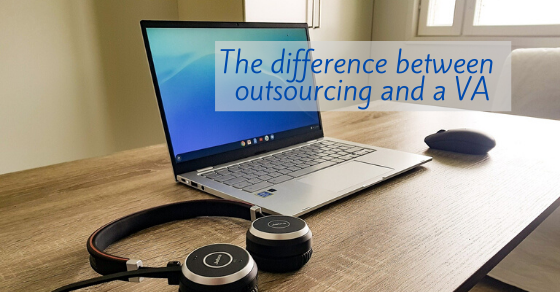The Virtual Assistant vs. the Outsourced Professional

It’s no secret that many companies are interested in augmenting productivity, and often reducing staffing costs, by engaging professionals who work overseas. Particularly in this climate, with much of the world working from home, companies may feel even more comfortable with the concept of virtual; even if they were hesitant in the past.
When engaging remote team members, it’s helpful to understand the differences between an outsourced professional and a virtual assistant. Making this distinction may help companies make decisions that fit their needs and budget.
The Outsourced Professional
For well over a decade, companies have relied on remote agencies or companies in faraway places to execute certain tasks which either a) save them wage costs and/or b) refocus output of their full-time staff. The number one thing to know about an outsourced professional is that typically, these people are working on specific tasks. The client pays X number of dollars per hour or per task, assigns that one task and a member of the outsourced team executes.
These types of tasks could include research, lead sourcing, customer service, cold calling, data entry, and even web design. These tasks and objectives are usually trained across a team and assigned to the company, which divides among the members of their staff. For any given project, one or several people may be completing the work.
These tasks are often very specific and repetitive. With the exception of web design, these tasks usually are completed by a list of set criteria but don’t deeply integrate with the schematics of the client’s firm.
Cold calling and outbound marketing, as well as customer service, naturally will integrate more with the client’s firm, but follow a rigorous and clear protocol.
The Virtual Assistant
Unlike the outsourced model, a virtual assistant is more like an extension of the client’s business. Clients seeking a virtual assistant should not have the outsource model in mind when engaging a VA. Virtual assistants may offer their services independently or through an agency. Dependable virtual assistants are seasoned professionals with high-level experience and education.
Virtual assistants address specific business goals, such as marketing, writing and editing, client relations, executive support, or another facet. Virtual assistants are gifted project managers and strategists who contribute as an integral part of the team. Think of a virtual assistant in much the same way you would a traditional staff member or long-term temp.
Don’t Get Sticker Shock
Another clear distinction between an outsourcing company and a virtual assistant is price. An outsourcing company will offer clients hourly tasks at a fraction of the price they would otherwise pay to a staff member or someone they source through a local temp agency. However, some clients think “remote” and are surprised to learn that VA pricing is at the market rate. Still, this is valuable to clients who often will pay an hourly rate, and only pay for time they use, rather than a full-time staff member who requires the added cost of various benefits, equipment, and space.
A company who needs to source thousands of email addresses, or complete massive amounts of repetitive data entry, may not be best served hiring a virtual assistant (though a virtual assistant certainly could accommodate this work, with pleasure!) A company who needs a seasoned professional to oversee intimate aspects of their business and be heavily client-facing will not be best served hiring a traditional outsourcing company. Companies should have a clear sense of their objectives.
Unique Work Flows
Clients who decide that a virtual assistant is the best choice should note that the relationship is most often not “drop and go”. The outsourcing model has presented a bit of a challenge when stacked next to the virtual assistant model. The outsourcing model has been around a bit longer, so when some people think “virtual assistant” they think, oh, I’m hiring for X and so I can give this task once and that’s it. They execute. Period.
It’s not that simple. While the framework presented by the outsource model has put that into the perception of many clients, the virtual assistant model does not work the same. The types of tasks are far different. More invested training comes with the territory of a virtual assistant. Good onboarding practices and managing expectations help alleviate problems.
When the client workload becomes heavy for an outsourcing company, the solution is simple: add staffing. A virtual assistant is uniquely engaged as an individual. Clients should understand that a talented VA has multiple clients. It’s helpful for clients to grasp this at the beginning of the relationship.
Most people work for one firm. Even if they are supporting multiple executives, they are working inside a unified culture. Priorities often overlap and time delegation has a clear logic. By contrast, a virtual assistant is mitigating interactions, strategies, directives, and culture for many different companies at the same time. An outsourced company works 24 hours a day, with staff on shifts. A virtual assistant is a lone soldier, usually available for 8-10 hours per day. A VA is constantly shifting gears, re-prioritizing, and managing conflicting demands. An excellent VA will help reduce this impact as much as possible, but clients should also be aware of the dynamic the VA faces.
 Submitted by Darcie
Submitted by Darcie
